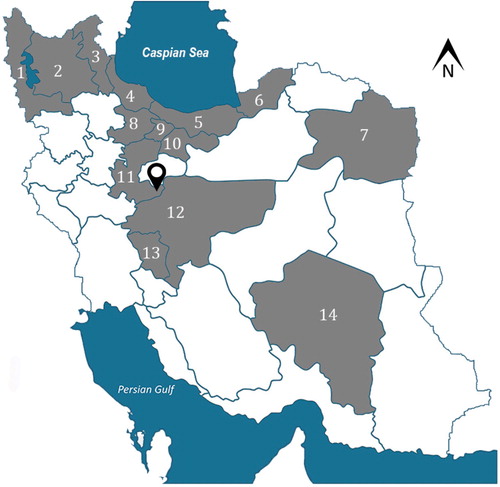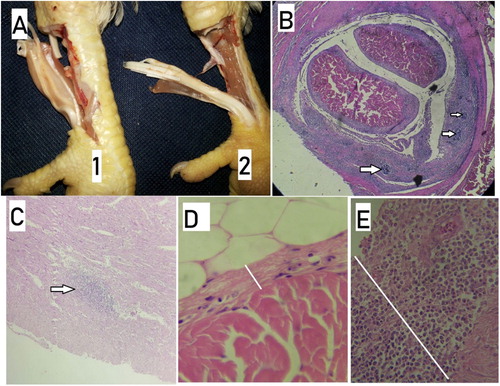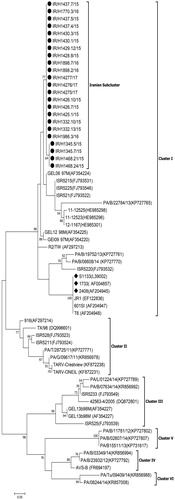Figures & data
Figure 1. The samples were submitted from 14 provinces. The map shows the geographical locations of affected broiler flocks in different provinces (1. West Azerbaijan; 2. East Azerbaijan; 3. Ardabil; 4. Gilan; 5. Mazandaran; 6. Golestan; 7. Razavi Khorasan; 8. Qazvin; 9. Alborz; 10. Tehran; 11. Markazi; 12. Isfahan; 13. Charharmahal and Bakhtiari 14. Kerman). Ardehal village, where the new ARV was detected in a broiler flock for the first time, is indicated by pin drop icon. The broiler flock was the progeny of a broiler breeder flock located in Golestan (No. 6). Approximately, 50% of broiler breeder farms are located around the Caspian Sea in the north of Iran and their progenies may be transported to other provinces.

Figure 2. Pathological lesions of avian reovirus infections in broiler. A: Broiler with marked tenosynovitis in digital flexor tendon (1), compared with normal tendon (2); B: Histopathological lesion of tenosynovitis with lymphoid follicle formation (arrow); C: Myocarditis; D: normal synovium; E: marked synovitis.

Figure 3. Phylogenetic tree constructed with partial Sigma C amino acid sequence of avian reovirus reference strains. The analysis was done using MEGA7.0 with Maximum Likelihood method (bootstrap values of 1000) based on the Jones-Taylor-Thornton (JTT) matrix-based model. Numbers at nodes correspond to bootstrap values. The Iranian ARVs and vaccine strains are indicated with black circles and diamonds, respectively, on the tree. The sequences were obtained from GenBank.

